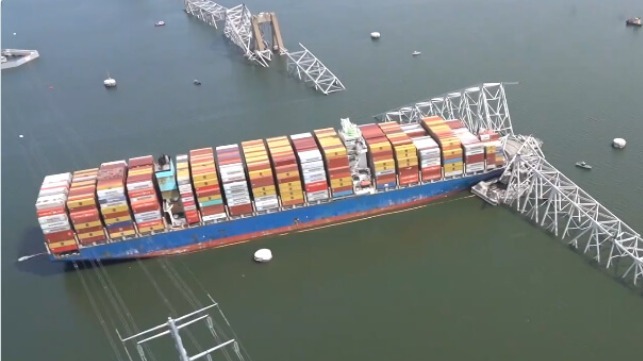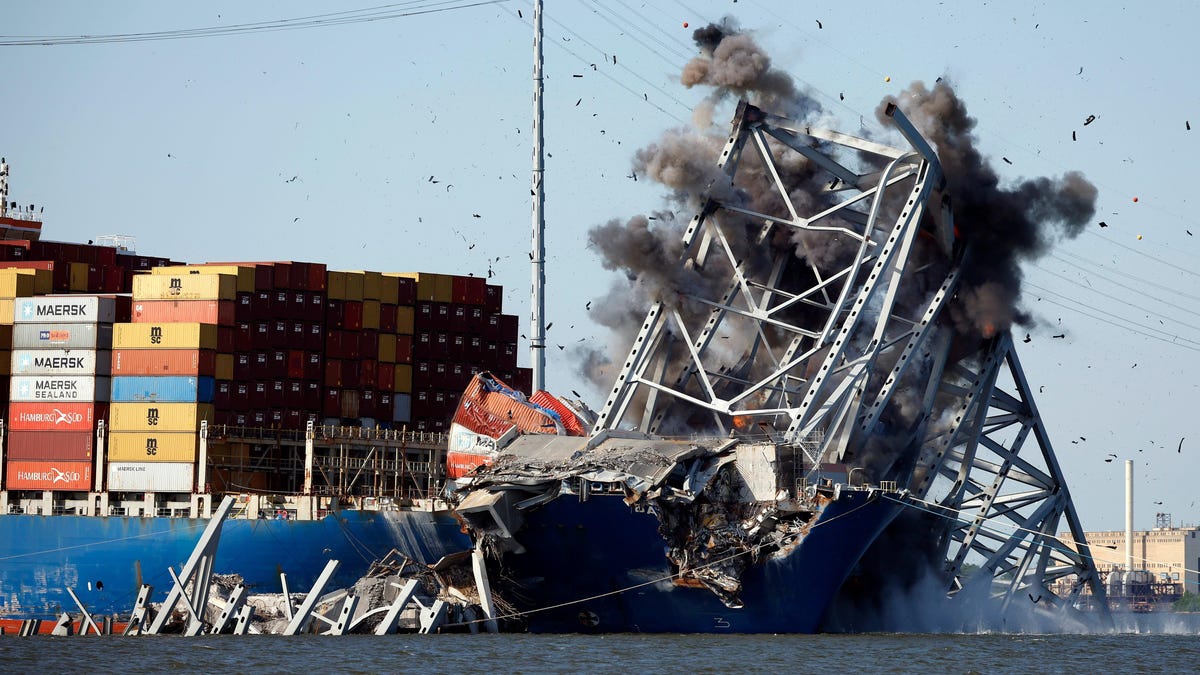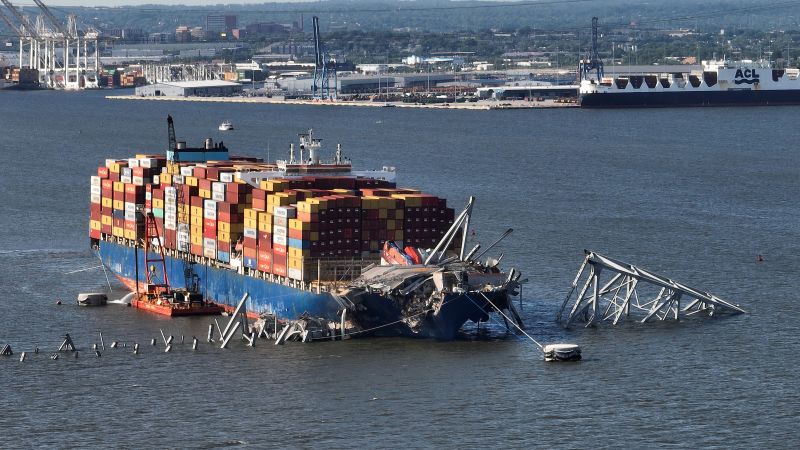
In the early hours of March 26, 2024, two significant events occurred in Baltimore's harbor. The container ship Dali experienced unexpected power outages, and the Francis Scott Key Bridge collapsed. These incidents are now under investigation by various authorities to determine their connection and potential causes.
According to reports from multiple sources, the Dali lost electrical power twice within 10 hours before its scheduled departure from Baltimore's port. The crew responded by switching to a different transformer that had not been used 'in several months.' However, the cause of these blackouts remains unclear and may be related to issues with the control arrangement for the power management system.
Meanwhile, on the bridge above, construction workers were making repairs when suddenly, without warning, a massive container ship crashed into it. The impact was catastrophic; six workers lost their lives instantly as the bridge collapsed and fell onto the Dali. The incident caused significant damage to both structures and disrupted maritime traffic in Baltimore's harbor for weeks.
Congressman Brandon Williams, a member of the House Transportation Committee, has expressed concern about potential cybersecurity risks related to these power outages on the Dali. He has urged the National Transportation Safety Board (NTSB) to investigate every component of the ship's electrical switchboards for signs of malicious code or other cyber threats.
The NTSB and FBI are currently conducting investigations into both incidents. Preliminary reports suggest that neither alcohol nor drug use was a factor in either event. However, the exact causes remain under investigation.
As of now, 21 crew members from the Dali remain trapped on board due to visa restrictions and ongoing investigations by the FBI and NTSB. Their morale has dipped due to emotional distress and financial difficulties caused by their inability to pay bills or send funds home to their families.
The shipping industry is a complex web of companies, vessels, and regulations. The Dali is owned by Singaporean companies Grace Ocean Private Ltd. and Synergy Marine Pte Ltd., while Hyundai built the vessel. Maersk Line Ltd., a Danish shipping conglomerate, was also involved in the voyage.
As investigations continue, it remains to be seen how these incidents are connected and what actions will be taken to prevent similar occurrences in the future.




